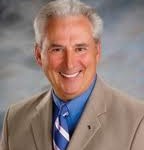10 Tips for Business Travel From an Experienced Road Warrior
 by: Fred Johnson, President/CEO, CUES
by: Fred Johnson, President/CEO, CUES
Traveling 150 days a year for 23 years as I have done during my career at CUES is a real challenge. If you travel on business yourself, you know that some days it’s grueling.
Still, there are things you can do to make your trips go more smoothly. Here are 10 of my favorite strategies:
- Carry on your bag whenever possible. If I’m traveling three days or less, I carry on.
- Pack a “go bag” with all your must-have personal items. If you have a bag ready to go all the time, you’ll save yourself time and you won’t forget something.
- Take a picture of where you park your car. If you’re traveling a lot, it can be difficult to remember which spot you’re in when you get back.
- Be prepared for the security check point. Wear slip-on shoes. It may seem like a small thing, but doing so will save you time and awkwardness in security. Also, have a place in your carry-on bag where you put your pocket change. An amazing amount of spare change is left behind at airport security every year.
- Carry more than one form of identification. I carry three: my driver’s license, my passport and my Pre✓™ trusted traveler program card (see next bullet). If I were to put my license in the wrong pocket and not be able to locate it right away, for example, I have other ways to identify myself if needed.
- Join TSA Pre✓™ http://www.tsa.gov/what_we_do/escreening.shtm trusted traveler program. The Transportation Security Administration offers expedited passage through security and customs to certain frequent flyers from Alaska Airlines, American Airlines, Delta Air Lines and certain members of Customs and Border Protection’s Trusted Traveler programs. (More airlines are expected to be added to the program this year.) When I applied, it cost about $100 and I had to fill in an online background check, then do a 20-minute interview at a customs office in the airport. Being a member is really handy.
- Get a paper copy of your boarding pass, even if you also have an electronic version in your smartphone. If the boarding pass scanner doesn’t work, the paper copy will get you on the plane. Plus, if you miss getting credit for a flight, it’s easier to send in the paper version to the airline than a barcode from your phone.
- Take Airborne or something similar at the first sign of a cold. Doing so has really helped me minimize being sick, despite the high exposure being in an airport creates.
- Use some handy smartphone apps. I like Flight Track Pro, which tells me about gate changes and delays. I also have an app into which I enter my room number when I check in. You can also get apps to help you choose the best seat on the plane.
- Use a Milockie http://www.milockie.com/product.html, a simple device that essentially allows you to put your own lock over the lock on a hotel safe. I like this because it would be hard to prove what you had put in a hotel safe, should something turn up missing.
Fred Johnson is president/CEO of CUES, a Madison, Wisconsin-based, independent, not-for-profit, international membership association for credit union executives. CUES’ mission is to educate and develop credit union CEOs, directors and future leaders. www.cues.org




